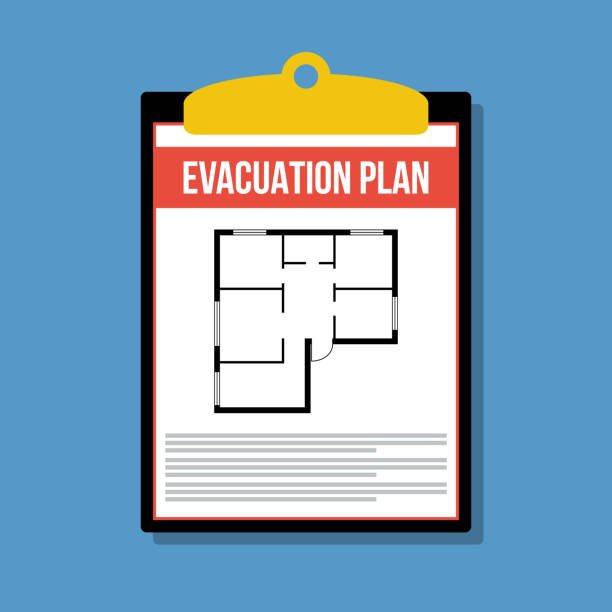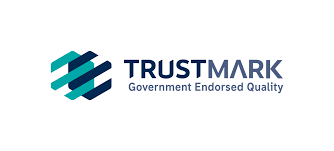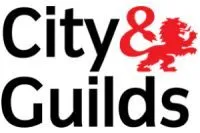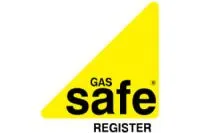ONLY £84.99
FOR Studio Apartment
* All inclusive (No hidden Cost)
* Limited time offer upto 2 weeks from now

Fire Risk Assessment in London– Protect Your Property
Have you ever considered the intricacies involved in conducting a thorough Fire Risk Assessment London? There’s more to it than meets the eye.
Understanding the nuances of Fire Safety Risk Assessments London requires attention to detail and adherence to strict guidelines. As you navigate through the process of Fire Risk Assessments London, you’ll soon realize the critical role they play in safeguarding your properties and the people within them.
At Landlord Safety Certificate, our IFSM & NEBOSH qualified assessors cover all areas across London, from simple to complex properties. Our goal is to help you obtain your fire certificate and ensure compliance with all legal requirements.
Importance of Fire Risk Assessments London
Understanding the significance of Fire Risk Assessment London is crucial for ensuring safety and compliance. Conducting these assessments not only helps meet legal regulations for commercial premises and shared residential spaces but also plays a crucial role in enhancing safety measures and preventing potential fire hazards.
By evaluating risks and implementing necessary safety measures, Fire Risk Assessments London offer numerous benefits. They assist in identifying hazards, evaluating risks based on severity and likelihood, and developing prevention strategies to minimize the impact of fires.
Book NowCurrent UK Legislation for Fire Risk Assessment London
Under the Regulatory Reform (Fire Safety) Order 2005, a Fire Risk Assessment London is compulsory for any business. It is mandatory for all businesses to have Fire Risk Assessments London in place. Under the Fire and Rescue Services Act 2004, Fire Authorities were given powers to serve an Improvement Notice or Prohibition Notice on premises that contravene the Regulatory Reform (Fire Safety) Order 2005.
Our experienced assessors offer compliance by delivering top-quality professional service. Secure your fire safety certificate and ensure your business complies with all legal obligations.
Book NowFire Risk Assessment London Process

To begin the discussion on the Fire Risk Assessment London process, let’s explore the systematic steps involved in evaluating and enhancing fire safety measures within premises.
Risk Identification
The process starts with hazard identification, where potential fire hazards like flammable liquids and electrical equipment are pinpointed. Following this, a thorough risk evaluation takes place, considering the likelihood and consequences of a fire occurrence.
Risk Analysis
It’s important to identify the population at risk, including employees, visitors, and vulnerable individuals. Subsequently, a mitigation plan is developed to address the identified risks effectively.
Fire Safety Measures
This plan includes implementing fire safety measures such as detection systems, ensuring firefighting equipment availability, establishing clear evacuation procedures, and conducting regular maintenance.
Emergency Planning
Emergency response planning is also crucial, involving the creation of a detailed plan outlining steps to take in case of a fire, evacuation procedures, communication strategies, and coordination with emergency services.
These steps are essential to reducing risks and ensuring a coordinated response to fire emergencies.
Fire Risk Assessment Cost and Service Quality
When discussing pricing and service quality for Fire Risk Assessments London, it’s vital to emphasize providing accurate evaluations at competitive rates. Our Fire Risk Assessment London services offer fixed rates starting from £84.99, ensuring clear pricing with no hidden costs.
We’re dedicated to customer satisfaction and service excellence, aiming to offer competitive rates without compromising on quality. Additionally, we provide free quotes and consultations to ensure that our services meet your specific needs efficiently.

Watch our Fire Risk Assessment London Video
Types of Properties Requiring Fire Risk Assessments London
For property owners and managers, identifying the types of buildings that require fire risk assessment is essential to guarantee compliance with safety regulations. Understanding the specific properties that necessitate assessments is critical to ensuring the safety of occupants and adherence to legal obligations.
Properties Requiring Assessments:
Residential buildings, including blocks of flats, come under legal obligation for assessments to make sure the safety of residents. Similarly, commercial spaces like offices and shops must undergo assessments to comply with safety regulations. Shared facilities such as communal areas in residential or commercial buildings also require assessments to mitigate fire risks effectively. Regular assessments, typically every 5 years or sooner for significant changes, are important to maintaining compliance and ensuring the safety of occupants in these diverse property types.
Key Components of a Fire Risk Assessment London
To safeguard your property effectively, juxtapose the elements of Fire Risk Assessment London against potential hazards and safety measures. Hazard identification is just the beginning; understanding the full scope of essential components is vital.
As you explore the key aspects, you’ll realize the intricacies involved in ensuring thorough fire safety. From evaluating evacuation procedures to coordinating with emergency services, each component plays an important role in mitigating risks and prioritizing safety.
Hazard Identification and Risk Evaluation
When conducting a fire risk evaluation, the essential first step is identifying potential hazards and evaluating associated risks. Begin by appraising the likelihood of a fire occurring based on factors like flammable materials and faulty electrical systems.
Next, consider the potential consequences of a fire outbreak, such as property damage or harm to individuals. Analyze vulnerable demographics within the building to tailor evacuation plans for those who may need extra assistance during emergencies.
Implement hazard control measures like storing flammable substances properly and maintaining electrical equipment regularly to reduce risks. Develop risk mitigation strategies such as installing fire detection systems and providing firefighting equipment throughout the premises.
Book NowFire Safety Measures Implementation
To effectively enhance safety measures against fire risks, focus on implementing proactive solutions throughout the premises. Safety equipment maintenance is important to ensure that all fire safety devices like smoke detectors, fire extinguishers, and alarm systems are in optimal working condition.
Conduct regular evacuation drills to familiarize everyone with escape routes and assembly points in case of emergencies. Implement fire prevention strategies such as proper storage of flammable materials and regular inspections to mitigate potential risks.
Utilize risk mitigation techniques like compartmentalization to prevent the spread of fires and minimize damage. Establish clear communication protocols to ensure that everyone is informed during emergencies and knows how to respond effectively.
Book NowPopulation at Risk Assessment London
Enhancing safety measures against fire risks involves evaluating the population at risk within the premises to guarantee effective emergency response planning. Conducting a thorough population at risk assessment London is crucial to identify vulnerable individuals who may require special assistance during an emergency. Understanding the demographics of the population within the building enables the development of tailored evacuation strategies that consider factors such as mobility limitations or language barriers.
Risk assessment plays a key role in determining the appropriate safety measures needed to protect all individuals in the event of a fire. It’s crucial to raise safety awareness among occupants to ensure they understand evacuation procedures and know how to respond in case of an emergency. By implementing measures like installing detection systems, ensuring the availability of firefighting equipment, and regularly maintaining these systems, you can enhance the safety of everyone in the building.
Book nowEvacuation Planning and Procedures
Develop a thorough evacuation plan that outlines precise procedures for safe and swift actions in case of a fire emergency. Evacuation strategies should include identifying safe routes, conducting regular emergency drills to familiarize occupants with procedures, guaranteeing the availability and proper maintenance of evacuation equipment like fire extinguishers and emergency lighting, and establishing effective emergency communication methods such as alarms and intercom systems.
Safe routes must be clearly marked and free of obstructions to facilitate quick evacuation. Regular emergency drills are essential to practice the evacuation plan and make sure everyone knows what to do in an emergency. Evacuation equipment should be strategically placed throughout the premises and regularly checked to guarantee functionality. Emergency communication systems need to be loud, clear, and easily understandable to alert occupants promptly. Coordinating with emergency services is critical for a swift and organized response. By prioritizing these aspects in your evacuation planning and procedures, you can enhance the safety and preparedness of your premises in the event of a fire.
Book nowDetection and Suppression Systems
Develop a thorough evacuation plan that outlines precise procedures for safe and swift actions in case of a fire emergency. Evacuation strategies should include identifying safe routes, conducting regular emergency drills to familiarize occupants with procedures, guaranteeing the availability and proper maintenance of evacuation equipment like fire extinguishers and emergency lighting, and establishing effective emergency communication methods such as alarms and intercom systems.
Safe routes must be clearly marked and free of obstructions to facilitate quick evacuation. Regular emergency drills are essential to practice the evacuation plan and ensure everyone knows what to do in an emergency. Evacuation equipment should be strategically placed throughout the premises and regularly checked to guarantee functionality. Emergency communication systems need to be loud, clear, and easily understandable to alert occupants promptly. Coordinating with emergency services is critical for a swift and organized response. By prioritizing these aspects in your evacuation planning and procedures, you can enhance the safety and preparedness of your premises in the event of a fire.
Emergency Response Plan Development
Establishing a well-defined emergency response plan is essential for the safety of your premises in case of a fire emergency. When developing your emergency response plan, consider the following key components:
Response plan strategies
From evacuation procedures to communication protocols, we tailor the plan to suit your property’s specific needs. With our detailed strategies, you can handle fire emergencies effectively.
Book NowCommunication protocols
Establish clear communication channels and procedures for notifying occupants, emergency services, and relevant stakeholders.
Book NowEvacuation drills
Conduct regular evacuation drills to ensure that all individuals know the designated evacuation routes and assembly points.
Book NowTeam Coordination
Assign roles and responsibilities to team members to facilitate a coordinated response during a fire emergency.
Book NowIncident Management
Implement procedures for managing and controlling fire incidents to minimize damage and guarantee the safety of everyone on the premises.
Book NowFAQs
When reviewing fire risk assessments, consider the frequency based on alterations. Update regularly to guarantee accuracy. Train staff on new procedures. Watch for oversight pitfalls. Stay compliant with legal requirements. Keep safety a top priority.
In various premises, legal requirements mandate fire risk assessments. Regular reviews and updates are essential. Qualified assessors with certifications are needed. Employee training on procedures is necessary. Common mistakes and oversights should be avoided for effective fire safety.
When becoming a fire risk assessor, make sure you meet training requirements and industry standards. Master the assessment process for effective risk mitigation. Follow best practices to safeguard lives and properties from potential fire hazards.
Guarantee employees are trained in fire safety procedures through regular fire drills and emergency response practice. Equip them with knowledge on evacuation plans, fire extinguishers, and safety equipment. Conduct risk assessments to prevent hazards.
When reviewing fire risk assessments, consider the frequency based on alterations. Update regularly to guarantee accuracy. Train staff on new procedures. Watch for oversight pitfalls. Stay compliant with legal requirements. Keep safety a top priority.
Identifying common challenges during a fire risk assessment involves understanding training needs, ensuring accurate documentation, maneuvering building complexities, and enhancing emergency readiness. Embrace these aspects to streamline the assessment process effectively and prioritize safety measures.
When comparing regulatory environments for fire safety assessments, consider city-specific challenges, cultural influences, and technological advancements. London may have unique requirements due to its dense urban landscape, historical buildings, diverse population, and advanced fire safety technologies.
In London, cultural influences and historical factors shape fire risk assessments, impacting urban planning and risk perception. Community engagement plays a role in understanding local dynamics. Awareness of these elements enhances safety measures and response strategies.
Imagine urban landscapes shaped by pollution, building materials, and climate change. Urban planning must adapt to mitigate risks. Consider air quality, materials’ flammability, and weather patterns. Assessments must address these dynamic environmental factors for safety.
Incorporating technological advancements and safety protocols enhances fire safety assessments. Utilize data analysis for risk mitigation, prioritize efficient evacuation procedures, comply with building regulations, and implement training programs for incident prevention. Stay updated on emerging trends for effective assessments.

















